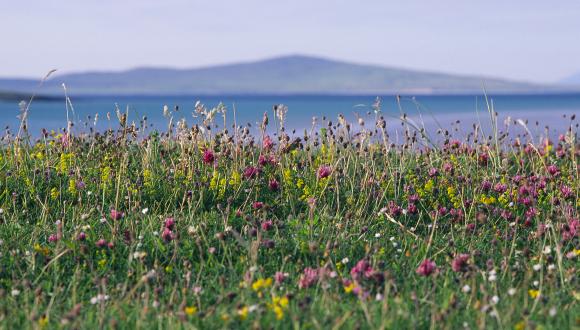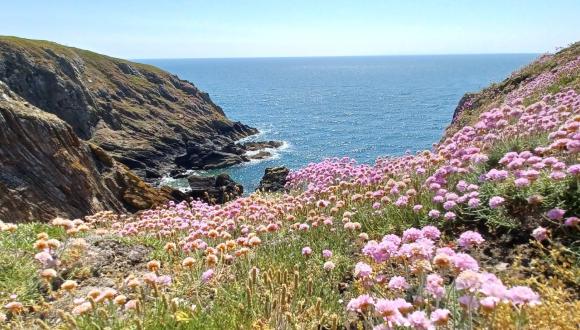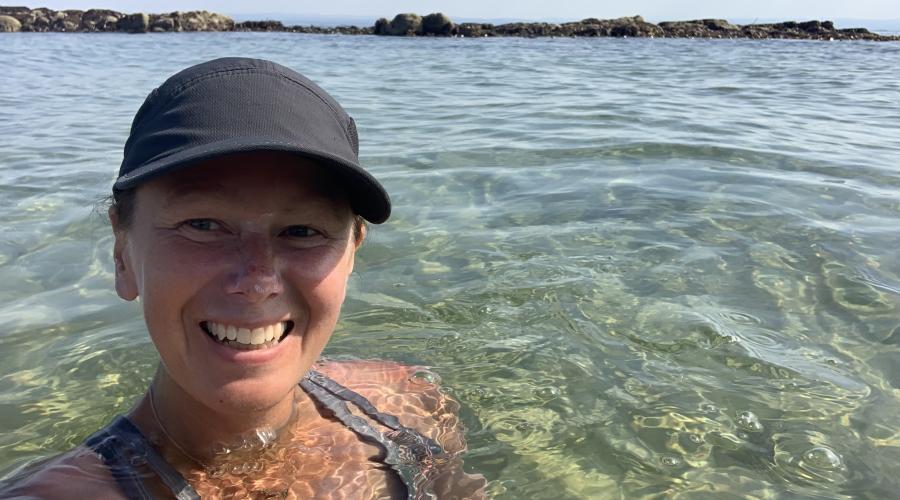
Working with Species on the Edge: a personal account from the East Coast
Tracy Munro, Species on the Edge Project Officer for the East Coast, Butterfly Conservation
Recently I was asked by an old colleague if I had any regrets that I had switched my clean room overalls and 25 years in the NHS and Radioactive Materials for a Species on the Edge T-shirt, a four-year contract, and a butterfly net. The answer was absolutely not; it takes huge determination and courage to switch away from a highly specialised, secure job that has kept you occupied for so long but that’s what I did, and I do not regret it one bit.
So, what has been happening since I joined Butterfly Conservation and the Species on the Edge (SotE) programme? The answer is rather a lot, so here is a wee snippet of how I have found the first nine months of the programme.
I started out on a whirlwind tour of several of my sites from Hopeman, through Arderseir, Rosemarkie, Logie Quarry, the beautiful Tarbat Ness, and up to the famous Coul Links. I quickly began to develop an understanding of some of the factors contributing to the decline of my two species: northern brown argus and small blue. Many of the sites are badly affected by the encroachment of gorse and on the cliff sites ivy is also a huge problem. There are many positives though; the Logie Quarry site is showing real potential for the collection of kidney vetch seed and Balnagown Estate is leading the way with their willingness to be involved in the fight to help several of our species thrive.
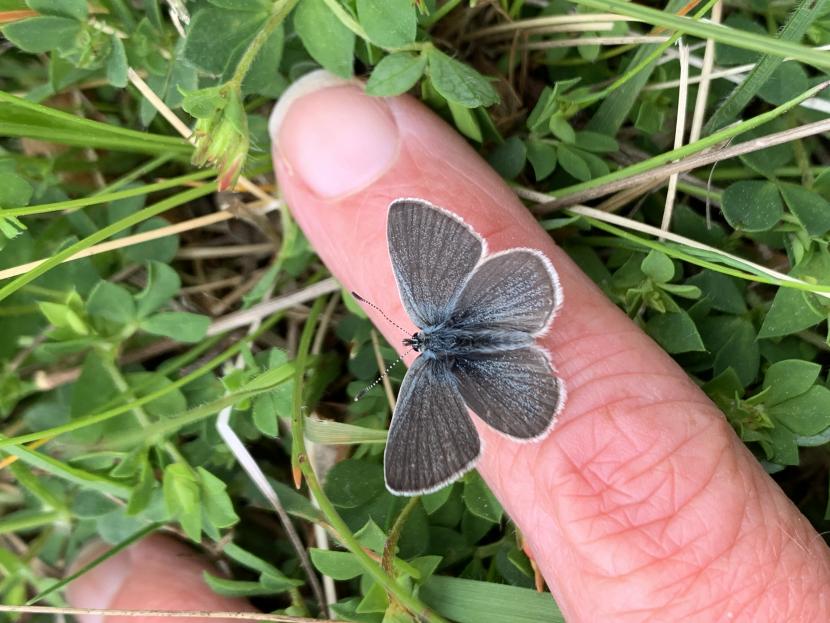
With SotE being a multi-taxa partnership of NatureScot and seven environmental NGOs, I have also been out meeting the other partners with whom I will be working. A visit to Brora with RSPB was well-spent, carrying out some GPS logging of posts and learning about the SotE project Terning the Tide. Tom Prescott from Butterfly Conservation was then a most excellent chauffer on our venture to the North Coast to meet our Plantlife partners and some local volunteers who are looking after our small blue colonies at Dunnet. Online catch-ups with Buglife provided some insight into the rare bordered brown lacewing.
During the summer survey season, I was tasked with surveying the tern colonies between Helmsdale and Brora while the local RSPB officer was away on sabbatical. To tell the truth, I was both excited at the thought of several days out watching these amazingly graceful seabirds and nervous that I would somehow get my grid references wrong or not be able to identify the terns correctly for RSPB. Why I was so worried I’m not sure as I am more than capable of navigation, being both an avid hill walker and mountain biker, and as it turns out there where no issue with either navigation or identification! It did however serve as a bit of an eye opener as to how some of our new volunteers may feel when we are sending them out for their first solo surveying and monitoring tasks, and I made a note to make sure I am as reassuring and supportive as possible with all our volunteers.
One of the highlights of my time so far has to be my first Highland Branch work party where I was taught by the experts Tom and Pete that the best way to run a work party is to sit on your bum in the sun and let the volunteers do all the work!
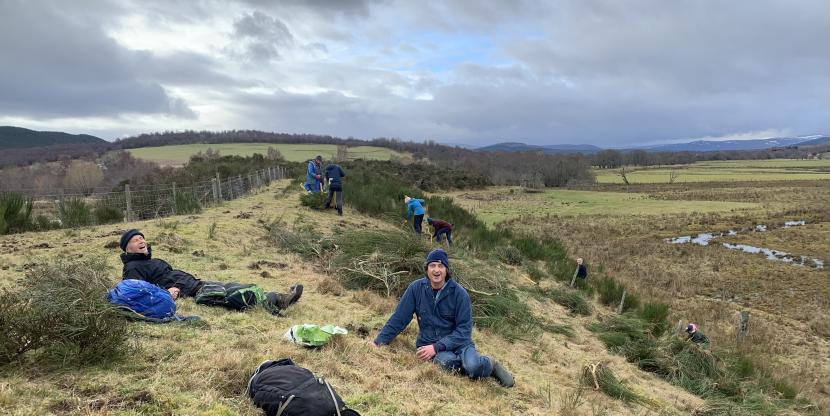
To see the number of volunteers who turn up and give up their free time to help is truly inspiring. As always, these work parties are hard work but great fun and very rewarding. It’s amazing how much we can learn from these volunteers with their wealth of local knowledge. Learning and sharing stories with each other is a very rewarding way to start having conversations about conservation and sharing the message to the wider community.
June brought the National Launch of Species on the Edge. This was a significant increase in my work load just as small blue season was getting well underway. Initially I felt a little overwhelmed with the task ahead but armed with a list (I love a good tick list) and support from the Butterfly Conservation Scotland team I soon threw myself into planning the event and ended up thoroughly enjoying it. Every partner brought something to the day and between us we had moth trapping, pebble and face painting, pond dipping, bird box building, as well as arts, crafts and games galore! Positive vibes and engagement seemed to be the order of the day - something that Species on the Edge is all about. This project has the potential to make a tangible difference to so many species in Scotland and I was proud and excited to begin the journey alongside our partner organisations and volunteers.
The summer meant Highland Show time was in full swing up here. For Easter Ross and Sutherland that could mean only one thing: The Sutherland Agriculture Show was the place to be. With Species on the Edge banners flying, it was a full-on day of contact-making and people engagement. It was fantastic to have so many people stop by the stall and share their enthusiasm and delight with the natural world around them. Both butterfly and moth ID leaflets were going down well; an overwhelming number of people suddenly had moths, bees, butterflies, and birds looking like fuzzy dots on phone screens that they wanted identified – great practice! I was genuinely impressed with the number of crofters and landowners who stopped by to ask for advice on land management and to enquire about working on species lists for their land. It is so encouraging to know that members of the public are hearing and understanding the message that we need to create bigger, better and more joined-up landscapes for our moths and butterflies to thrive in.
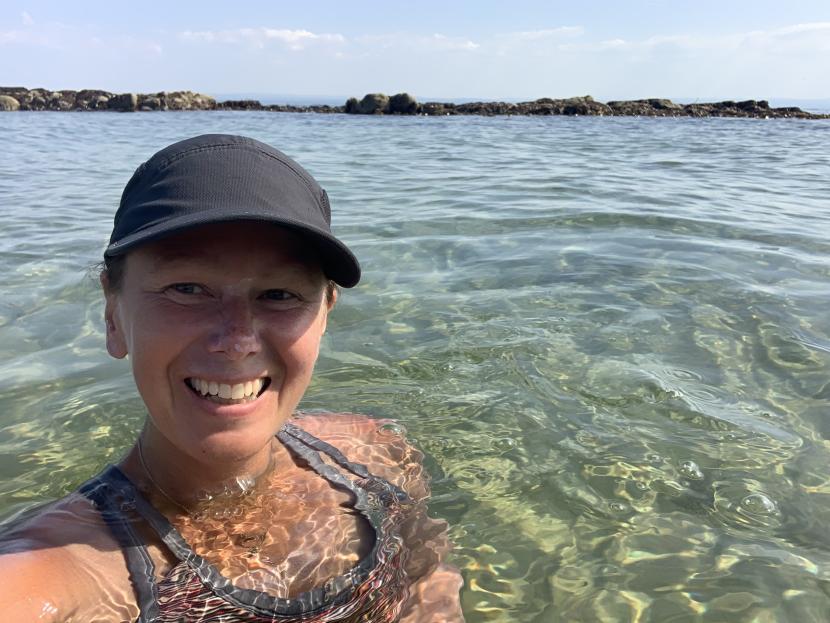
Next up was a visit to the iconic Coul Links for a spot of filming with RSPB. Does this mean I get to add to my CV that I am now a film star?! On a serious note, it is almost unbelievable that this very special site, full of species rich grassland and 246 species of lepidoptera, is once again under threat. The common rockrose was looking especially beautiful on the day of our visit, a species which our own northern brown argus relies on, being the sole food plant for the caterpillar. The northern brown argus has a rich thriving colony at Coul Links and it would be devastating to lose this. What is encouraging though is the way that NGOs have once again pulled together to stand up for nature and say ‘no we will not let this happen on our watch’.
Working alongside partner organisations has been a real highlight of my time so far at Species on the Edge; the sharing of knowledge and ideas is a great way to grow and learn. I would also like to thank every single one of our volunteers, be they existing ones or new folk who have joined us at one of our many events for the first time this year - without you we simply would not be able to achieve all that we do.
Finally, if you have a dream to chase then gather up all your courage and go for it! As cheesy as it sounds, this year has been amazing. Don’t get me wrong, there has been a lot of hard work and some very long days, but I have loved every single second of it.
